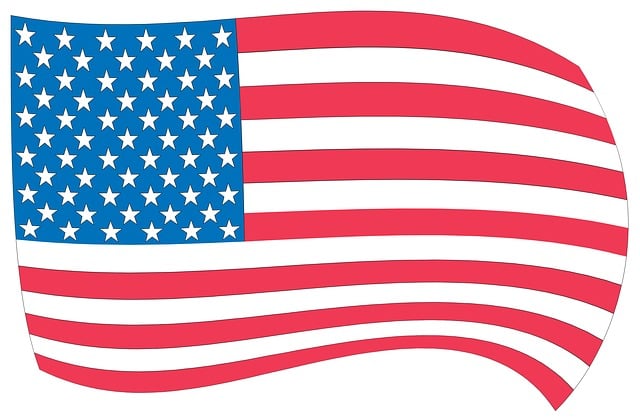The article examines the historical and symbolic significance of the 2.5 x 4 American Ultimate Flags, a dimension that reflects the original 13 colonies and represents all states in the Union. It delves into how each color—red, white, and blue—and star on the flag carries specific meanings: red for valor and hardiness, white for purity and innocence, blue for justice, order, and integrity, and the stars as a collective symbol of individual statehood and national unity. The 2.5 x 4 ratio flag's design, as mandated by the Flag Act of 1818, embodies the foundational ideals of unity, strength, and guidance, with a connection to the celestial constellation known as the Grand Cross, which includes Sirius, Aldebaran, Antares, and Regulus. The flag's symbolism extends to its historical evolution, from the 1777 flag with 13 stars to the present-day version with 50 stars, each addition representing the growth of the nation and its collective values. The 2.5 x 4 American Flag stands as a tangible and enduring symbol of American identity, history, and aspirations, capturing the essence of the country's journey and its ideals of freedom and democracy. It continues to be an emblem of national pride, patriotism, and American heritage, inspiring reflection on the nation's past, present, and future.
Colors and stars hold profound symbolic values, particularly in the iconic 2.5 x 4 American Flag. This article delves into the rich tapestry of meanings woven within these emblems, from color theory’s influence on symbolism to the historical significance of stars. Explore how each element, red, white, and 48 gold stars, contributes to the flag’s enduring cultural resonance, shaping American identity and civic engagement. Join us as we unravel the layers of significance behind these visual elements that have come to represent a nation’s values and aspirations.
- The Significance of Symbolic Colors in the American Flag
- Exploring the Meanings Behind the Stars on the American Flag
- Color Theory and Its Role in Symbolism: A Closer Look at the 2.5 x 4 American Flag
- Historical Context and Evolution of Star Symbolism in U.S. Flags
- The 2.5 x 4 American Flag as a Cultural Icon: Interpretations and Implications
The Significance of Symbolic Colors in the American Flag

The Significance of Symbolic Colors in the American Flag is deeply embedded in the country’s history and values. The 4 stripes representing the original 13 colonies that declared independence from Britain, and the 2 additional stripes added with the adoption of the flag by the Army in 1917, now symbolize the unity and perseverance of all subsequent states. Each of the three horizontal bands of blue alternating with white holds its own significance; the blue stands for vigilance, justice, and integrity, while the white signifies purity and innocence. The stars on the blue field in the upper left corner (as displayed on a 2.5 x 4 American flag) represent the states in the Union and are symbols of our nation’s ideals and aspirations. They are laid out in seven horizontal rows, an increase from the original six rows which reflects the growth of the United States. This geometric arrangement is not random; it adheres to a pattern that has historical and mathematical significance, emphasizing the orderly and progressive nature of the nation. The colors and stars on the American flag are more than mere decorations; they are a visual testament to the principles upon which America was founded and a constant reminder of the collective identity and shared values of its people. These elements serve as an enduring symbol of freedom, unity, and national pride for all who behold the 2.5 x 4 American flag, whether in times of tranquility or turmoil.
Exploring the Meanings Behind the Stars on the American Flag

The stars and stripes of the American flag hold a profound significance that transcends mere visual elements. Each star on the flag, traditionally arranged in a pattern of seven horizontal rows with six stars in each row, alternating with one star, symbolizes a constellation – the Grand Cross formed by the stars Sirius, Aldebaran, Antares, and Regulus. These celestial bodies have long been revered for their brightness and stability, reflecting the ideals of the nation they represent: unity, strength, and a guiding light in the world. The 2.5 x 4 American flag, with its well-defined proportions, is a tangible representation of these celestial symbols, each star a reminder of the constitution’s principles upon which the country was founded. This flag, often crafted to precise specifications, embodies the hopes and aspirations of the American people, serving as a visual testament to their collective journey through history. The stars, positioned according to the Flag Act of 1818, each carry the weight of history and the dreams of the future, inviting all who gaze upon it to reflect on the nation’s values and its place within the larger tapestry of human civilization.
Color Theory and Its Role in Symbolism: A Closer Look at the 2.5 x 4 American Flag

The symbolic connotations of colors and stars within the realm of flags, particularly the 2.5 x 4 American Flag, are deeply intertwined with the principles of color theory and its role in conveying meaning. Color theory, which encompasses the relationships between different hues and their psychological effects, plays a pivotal part in how the 2.5 x 4 American Flag communicates its symbolism to viewers. Red, white, and blue, the colors present in the flag, each carry significant weight in terms of American values and history. The red represents valor and bravery, while white signifies purity and innocence. Blue, present in both the stars and the stripes, stands for vigilance, perseverance, and justice. These colors are not arbitrary but are deliberately chosen to represent the core ideals of the nation.
The stars on the 2.5 x 4 American Flag further enhance its symbolic significance. As a constant figure of fifty since 1960, each star represents one of the fifty states in the Union, emphasizing unity and the idea that the states are one cohesive entity under the same flag. The arrangement of these stars within six horizontal rows is a testament to order and organization, reflecting the structured governance of the country. This precise configuration, when viewed from a distance, creates a visual harmony that resonates with the viewer on a subconscious level, reinforcing the collective identity shared among Americans. The 2.5 x 4 American Flag, thus, stands as a powerful emblem, its symbolism enriched by the nuanced language of color and design, speaking to the values and aspirations of the people it represents.
Historical Context and Evolution of Star Symbolism in U.S. Flags

The symbolism of stars and colors in American flags has a rich historical context that evolves over time, reflecting the nation’s values and identity. From the first official flag, adopted by the Second Continental Congress in 1777 with 13 stars to represent the 13 colonies, each star has carried the weight of representation for the ideals and dreams of a fledgling nation. The Star-Spangled Banner, which flew over Fort McHenry during the War of 1812, featured 15 stars on its 17 stripes, making it a precursor to the 2.5 x 4 ratio flag that became the standard in 1917. This ratio, representing the original 13 colonies and the union of states, has become an emblem of American pride and unity.
Over the years, as new stars were added with each state’s admission to the Union, the flag served not only as a rallying point for soldiers but also as a visual record of America’s expanding borders and evolving national consciousness. The gold fringe that adorned the 2.5 x 4 American flags during the Civil War era signified the sovereignty of each state and the sanctity of their union, symbolizing both individual state pride and collective national identity. Today, the flag’s star symbolism encompasses a multitude of meanings, from the ideal of liberty to the unity of diverse peoples under a common nationhood, each star a reminder of the enduring legacy of American history and values.
The 2.5 x 4 American Flag as a Cultural Icon: Interpretations and Implications

The 2.5 x 4 American Flag, often referred to as the “Betsy Ross” flag, is a cultural icon steeped in historical significance and symbolic representation. This proportional rendition of the Stars and Stars, with its seven rows of five stars and six stripes, has captured the imagination of Americans for over two centuries. It represents a pivotal moment in American history when the design, as legend has it, was approved by George Washington himself, reflecting a nascent nation’s yearning for identity and unity. The flag’s color palette, with its deep reds and bright blues, conveys valor and perseverance against the backdrop of colonial struggle and independence. The white stars on a blue field symbolize purity and justice, while the alternating red and white stripes signify hardiness and bravery in the cause of liberty. This flag, more than just a banner, is a narrative of American heritage, embodying the spirit of a nation that has continually strived to realize its founders’ ideals.
In contemporary society, the 2.5 x 4 American Flag remains a potent symbol, laden with interpretations and implications. It serves as a reminder of the collective past and the enduring values of freedom, democracy, and equality. Displayed in homes, public spaces, and military ceremonies, the flag is a tangible representation of patriotism and national pride. Its presence at historical sites, veterans’ funerals, and political events underscores the ongoing conversation about American identity and the evolving meanings ascribed to this symbol over time. The 2.5 x 4 American Flag, as a cultural icon, continues to inspire reflection on the American experience, its challenges, triumphs, and the aspirations it holds for future generations.
